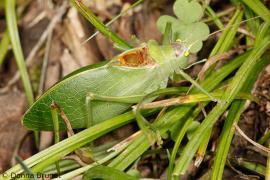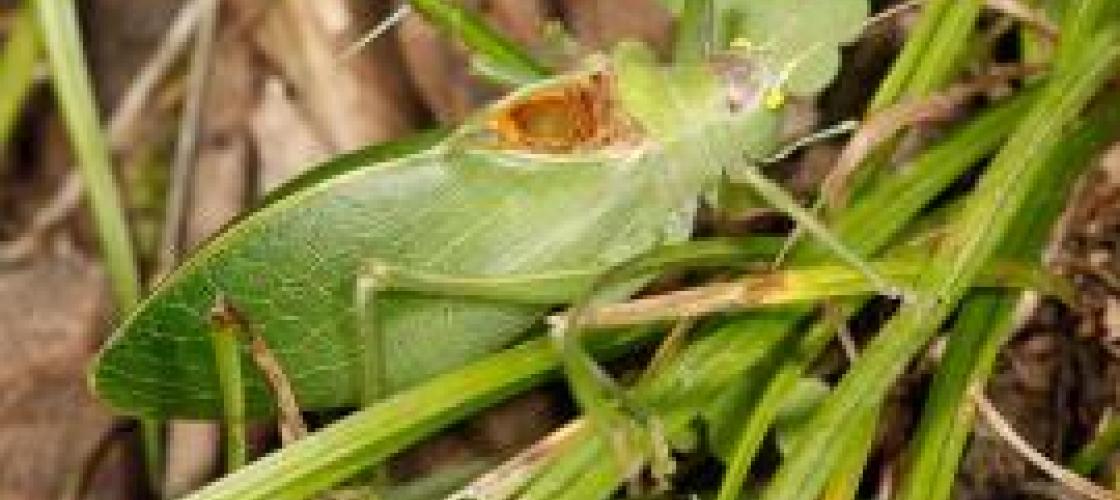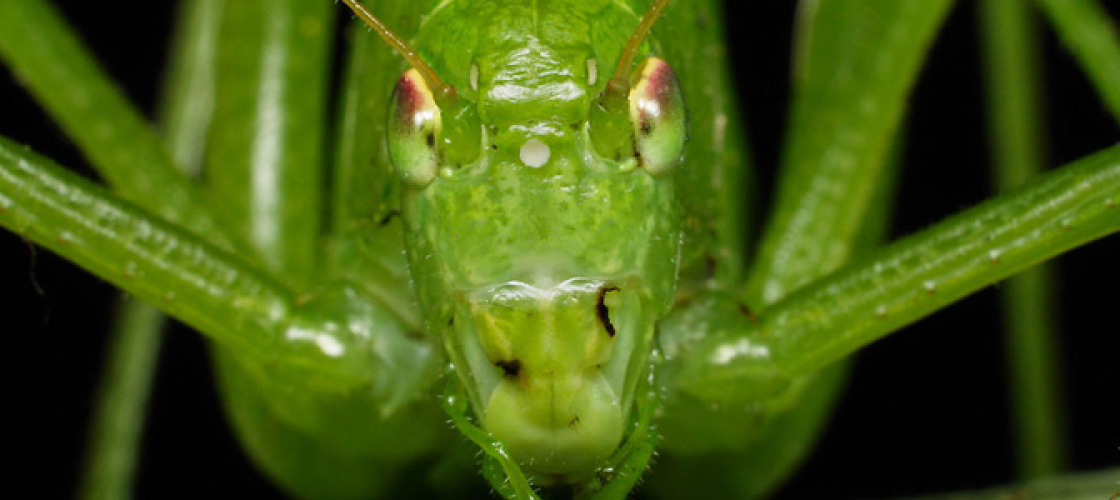As spring warms to summer nature makes new sounds. The evening’s toad and frog chorus makes way for a symphony of insect sounds. One of the loudest and most familiar calls belongs to the katydids.
These insects make their distinct “katy-did-katy-didn’t” song by rubbing their wings together. The sharp edge of the right front wing moves rapidly against a filelike ridge on the left front wing. To produce a more intense signal, they synchronize their calls with other katydids hidden in the tree tops.
Both male and female katydids sing to attract mates. After mating in the fall, the female lays her eggs on bark and young stems. The eggs are dormant through winter and hatch the following spring.
Katydids are a type of grasshopper. Their green bodies have long slender legs, large, veined wings and antennae which are twice as long as most grasshoppers. Because of their antennae, they are called “long-horned” grasshoppers. These insects are believed to mate mostly at night, and to use their long antennae to help locate each other.
This nature note is provided by the Missouri Department of Conservation.
More Facts About Katydids:
- Katydids are members of the Tettigoniidae family of grasshoppers, meaning they are long-horned. Their antennae is often longer than their body.
- Sometimes when you pick up a katydid, a substance comes out of it’s mouth. This is a defensive chemical that’s naturally secreted. Some lore would have you believe it’s tobacco juice, but that’s not true.
- Full size katydids grow to measure around 2 1/2 inches long. They are quite a bit larger than a lot of grasshoppers seen popping up.
- There is a short winged katydid that is colored bubblegum pink. It’s rarely seen.
Learn even more in MDC’s Field Guide.
Want to hear more critters in the wild? Listen to this piece called Critter Stomp.




Recent Posts
























